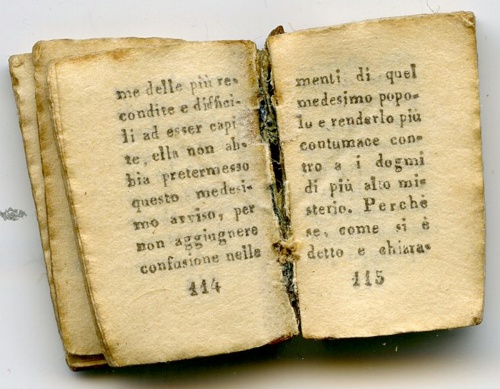![]() What happens when a student doing a research project needs to use fragile, rare, and valuable materials from our special collections? Thanks to the magic of digitization, we can provide them with access to these materials without harm to the originals. Sometimes we need to scan the item ourselves, but frequently Google Books or the Internet Archive has already digitized the book. In this case, all we need to do is add a link from our online library catalog to the full-text version of the book. For example, a senior recently requested the use of James Pike’s “The Prostrate State: South Carolina under Negro Government”. When the book was retrieved from the special collections, we noticed that the first twenty or so pages had broken off from the text block. The student looked through the book very carefully, but it became apparent that the book was too fragile for use. Fortunately, Tim Sprattler, who is in charge of the special collections, was able to find a link at Internet Archive and has added it to the library catalog record. The result was a happy student, and a book that did not sustain further damage. Here is what the record looks like:
What happens when a student doing a research project needs to use fragile, rare, and valuable materials from our special collections? Thanks to the magic of digitization, we can provide them with access to these materials without harm to the originals. Sometimes we need to scan the item ourselves, but frequently Google Books or the Internet Archive has already digitized the book. In this case, all we need to do is add a link from our online library catalog to the full-text version of the book. For example, a senior recently requested the use of James Pike’s “The Prostrate State: South Carolina under Negro Government”. When the book was retrieved from the special collections, we noticed that the first twenty or so pages had broken off from the text block. The student looked through the book very carefully, but it became apparent that the book was too fragile for use. Fortunately, Tim Sprattler, who is in charge of the special collections, was able to find a link at Internet Archive and has added it to the library catalog record. The result was a happy student, and a book that did not sustain further damage. Here is what the record looks like:
April 2024 M T W T F S S 1 2 3 4 5 6 7 8 9 10 11 12 13 14 15 16 17 18 19 20 21 22 23 24 25 26 27 28 29 30 Archives
- July 2015
- August 2014
- July 2014
- June 2014
- January 2012
- November 2011
- October 2011
- August 2011
- July 2011
- June 2011
- April 2011
- March 2011
- February 2011
- January 2011
- September 2010
- May 2010
- April 2010
- March 2010
- February 2010
- January 2010
- December 2009
- November 2009
- October 2009
- September 2009
- August 2009
- July 2009
- June 2009
- April 2009
- March 2009
- February 2009
- January 2009
- December 2008
- November 2008
- October 2008
- September 2008
- May 2008
- April 2008
- December 2007
- October 2007
- August 2006
- July 2006
Family Blogs
Southern Tier Rider Blogs

 Also on display is our copy of one of five in a series of “the world’s smallest book.” An accompanying photo reveals the text of the book, which is The Lord’s Prayer. The book was donated by Dudley L. Vaill, P. A. Class of 1927. Another version of the Lord’s Prayer was found in the cubby holes of Bertha Bailey’s desk. The prayer is inscribed within a small circle, in this case a three-cent piece, with the prayer repeated to fill the circle. Finally, the display features a sermon book belonging to the eldest of the five Samuel Phillips which came to the Archive with the Phillips family papers. He wrote all his sermons in very small handwriting to save paper, and must have had excellent eyesight to be able to read them in the dim light of his church.
Also on display is our copy of one of five in a series of “the world’s smallest book.” An accompanying photo reveals the text of the book, which is The Lord’s Prayer. The book was donated by Dudley L. Vaill, P. A. Class of 1927. Another version of the Lord’s Prayer was found in the cubby holes of Bertha Bailey’s desk. The prayer is inscribed within a small circle, in this case a three-cent piece, with the prayer repeated to fill the circle. Finally, the display features a sermon book belonging to the eldest of the five Samuel Phillips which came to the Archive with the Phillips family papers. He wrote all his sermons in very small handwriting to save paper, and must have had excellent eyesight to be able to read them in the dim light of his church.